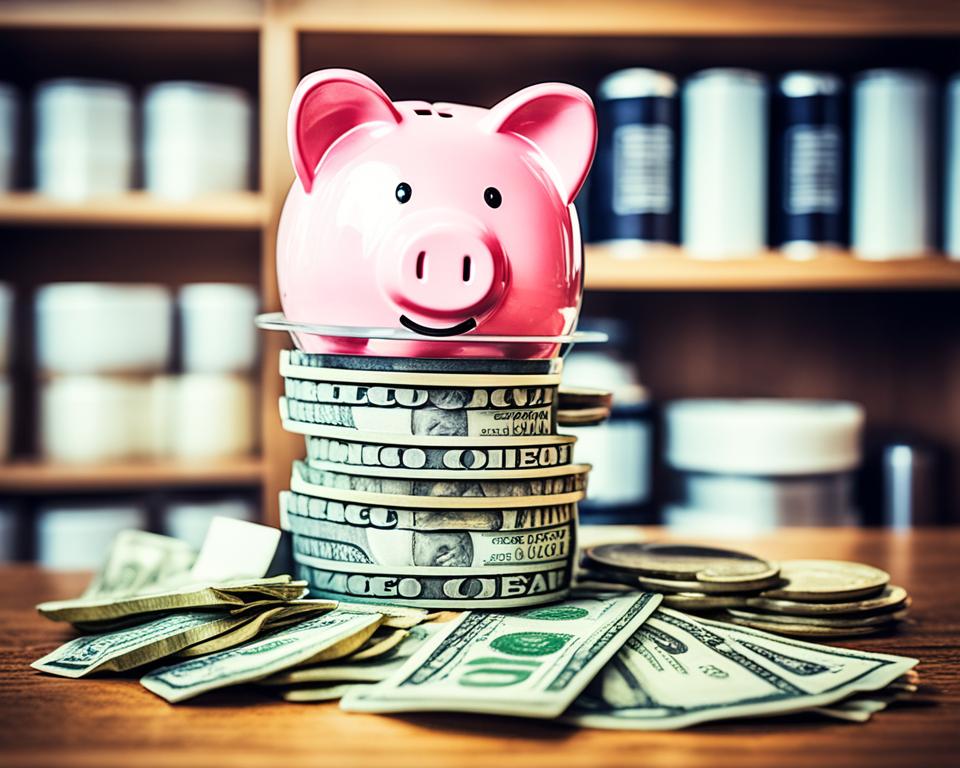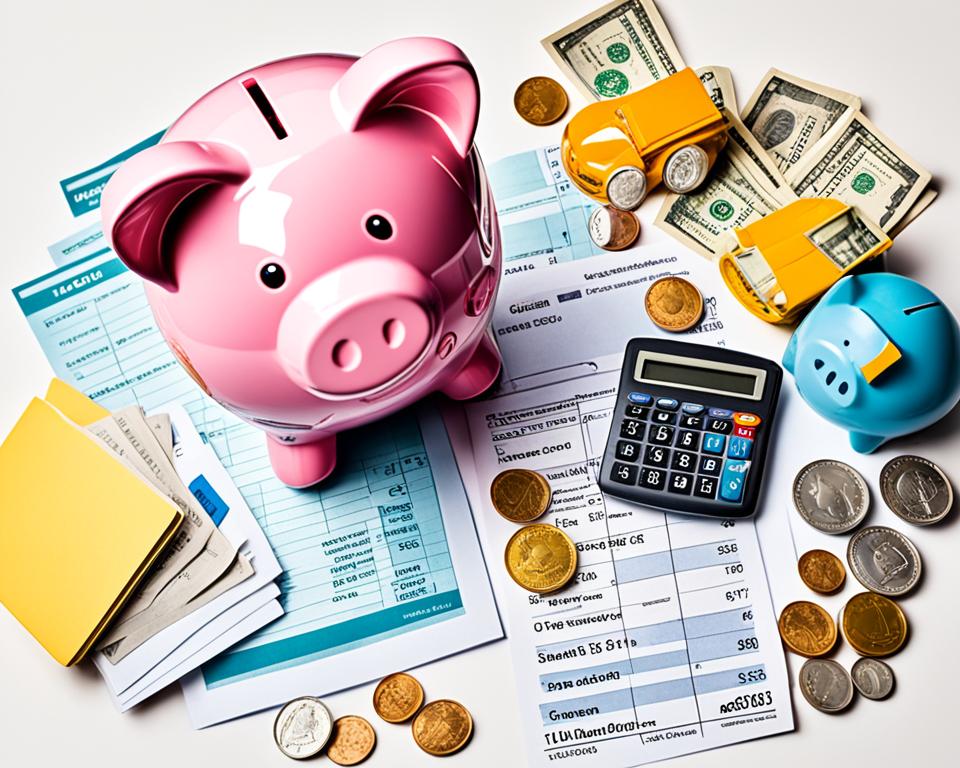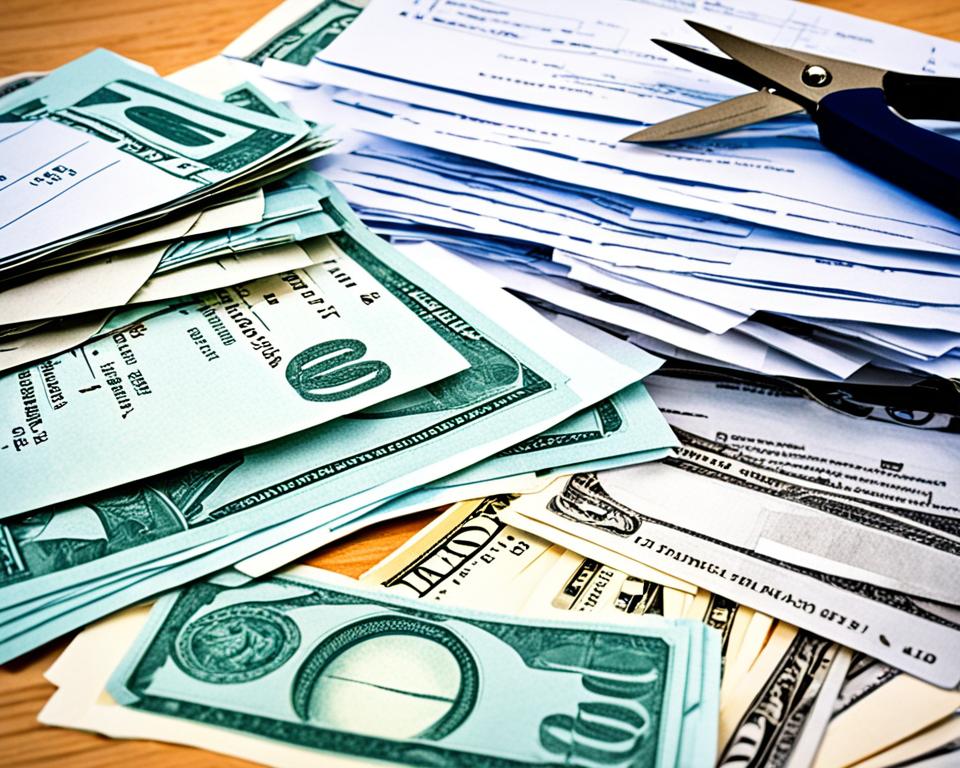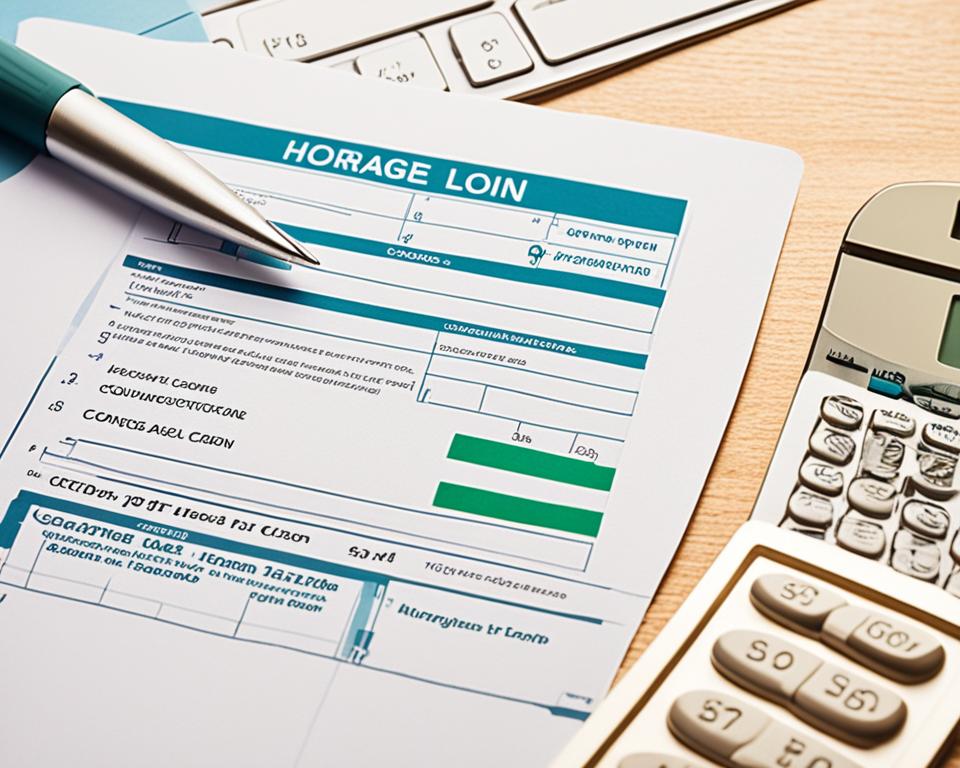Financial preparedness is crucial for maintaining stability and resilience in the face of unexpected expenses or job loss. Building an emergency fund and creating a contingency plan can help protect your income and provide a safety net in times of financial uncertainty.
An emergency fund serves as a dedicated cash reserve to cover unforeseen expenses such as car repairs, medical bills, or a sudden loss of income. Research shows that individuals with insufficient savings struggle to recover from financial shocks. Therefore, it’s important to start building your emergency fund today.
Setting a specific savings goal tailored to your financial situation is the first step. Different strategies can be employed to build and grow your emergency fund. By creating a savings habit, managing your cash flow, taking advantage of one-time opportunities to save, making saving automatic, and saving through work, you can steadily build your financial safety net.
It’s also essential to consider job loss strategies to protect your income. By preparing a financial cushion, exploring income protection options, and understanding unemployment benefits and tax planning, you can navigate periods of job loss with greater ease and security.
Financial resilience begins with taking proactive measures to prepare for unexpected expenses and job loss. Let’s explore the strategies and steps you can take to ensure your financial well-being and peace of mind.
Key Takeaways:
- Building an emergency fund is crucial for financial resilience and protection against unexpected expenses.
- Create a savings habit by setting a specific goal and making consistent contributions.
- Manage your cash flow by adjusting your budget, negotiating with creditors, and seizing savings opportunities.
- Take advantage of one-time opportunities to save, such as tax refunds or cash gifts, to boost your emergency fund.
- Make saving automatic through recurring transfers or utilizing employer options like split paychecks and direct deposit.
Building a Savings Habit
Building a savings habit is essential for growing your emergency fund and achieving financial stability. By consistently contributing to your savings, you can create a strong financial safety net to protect against unexpected expenses or job loss. Follow these steps to develop a savings habit that will help you reach your goals:
1. Set a specific savings goal
Start by setting a specific savings goal that aligns with your financial objectives. Whether it’s saving a certain amount for emergencies or reaching a milestone, having a clear target will keep you motivated and focused.
2. Create a system for consistent contributions
Establish a system that allows you to make consistent contributions toward your savings. This could involve setting up automatic recurring transfers from your checking account to your savings account or allocating a specific amount of money each day, week, or payday for saving purposes. By automating your contributions, you’ll make saving easier and more convenient.
3. Monitor your progress regularly
To stay on track with your savings habit, it’s important to monitor your progress regularly. Check your savings balance frequently to see how close you are to reaching your goal. This not only helps you stay accountable but also provides a sense of accomplishment as you see your savings grow.
4. Celebrate your successes along the way
Don’t forget to celebrate your successes as you reach milestones in your savings journey. Treat yourself to a small reward or indulge in a favorite activity as a way to acknowledge your hard work and dedication. Celebrating your successes can serve as motivation to continue building your savings habit.
By following these steps and integrating them into your financial routine, you can develop a strong savings habit that will pave the way for financial security and resilience.
Managing Cash Flow
Managing cash flow is a crucial aspect of financial preparedness. By evaluating the timing of your income and expenses and making necessary adjustments, you can ensure that you have enough money available to handle unexpected expenses or job loss. Here are some strategies to help you effectively manage your cash flow:
1. Budget Adjustments
Review your budget and identify areas where you can make adjustments. Look for non-essential expenses that you can temporarily cut back on to free up more cash for savings. Prioritize your spending to focus on essential items and reduce discretionary expenses until your financial situation improves.
2. Creditor Negotiations
If you’re facing a cash flow crunch, consider negotiating with your creditors to adjust due dates or repayment terms. Contact your lenders or service providers to explain your situation and explore options that can help ease your financial burden. By renegotiating payment terms, you can create temporary relief and redirect funds towards your emergency savings.
3. Savings Opportunities
Take advantage of weeks or months with extra income to save more and bolster your emergency fund. For example, if you receive a bonus at work or a tax refund, allocate a portion of it towards your savings. Capitalize on these one-time opportunities to accelerate your progress in building a financial safety net.
“Managing cash flow is like steering a ship. By making deliberate adjustments and keeping a close eye on your income and expenses, you can navigate through financial challenges and stay on course towards a secure financial future.”
Implementing these strategies can help you improve your cash flow and increase your savings opportunities. By effectively managing your cash flow, you’ll be better prepared to handle unexpected expenses or job loss when they arise.
| Benefits of Managing Cash Flow | Actions |
|---|---|
| Improved financial stability | Budget adjustments |
| Reduced stress | Creditor negotiations |
| Increased savings potential | Savings opportunities |

Taking Advantage of One-Time Opportunities to Save
If you’ve been fortunate enough to receive a tax refund or a cash gift, consider using these one-time opportunities to quickly build up your emergency fund. By saving all or a portion of these windfalls, you can create an additional financial cushion for unexpected expenses or job loss.
When it comes to tax refunds, instead of splurging on a shopping spree or vacation, allocate a portion of the refund towards your emergency fund. This can provide you with much-needed financial security in case of any unforeseen circumstances.
Cash gifts are another great way to boost your emergency fund. Whether it’s a birthday, holiday, or graduation gift, consider putting a portion of the cash directly into your savings. It may not seem like much at first, but every dollar counts when it comes to building your financial safety net.
Remember, taking advantage of these one-time opportunities to save can help you proactively prepare for any financial difficulties that may arise. By consistently contributing to your emergency fund, you’ll be better equipped to handle unexpected expenses or job loss without resorting to credit cards or loans.
| One-Time Opportunities to Save | Amount Saved |
|---|---|
| Tax Refund | Depends on individual’s tax situation |
| Cash Gifts | Varies depending on the occasion |
Making Saving Automatic
One of the easiest and most effective ways to consistently contribute to your emergency fund is by making saving automatic. By setting up recurring transfers between your checking account and your savings account, you can effortlessly build up your savings over time.
Automating your savings allows you to stay committed to your financial goals without having to manually transfer funds each month. By taking advantage of this strategy, you can ensure that consistent contributions are made to your emergency fund, making it easier to achieve your savings targets.
It’s important to monitor your account balances regularly to avoid any overdraft fees and ensure that you have enough funds available for your automatic transfers. By maintaining a watchful eye on your account balances, you can make any necessary adjustments to your savings contributions to align with your financial situation.
Remember, consistent contributions are key to building a robust emergency fund and achieving financial security. By making saving automatic, you can stay on track with your savings goals and be better prepared for unexpected expenses or job loss.
Benefits of Making Saving Automatic
- Saves time and effort by automating the savings process
- Ensures consistent contributions to your emergency fund
- Helps you stay committed to your savings goals
- Reduces the risk of forgetting or missing savings contributions
- Allows you to focus on other financial priorities
So, take advantage of the convenience and peace of mind that automatic savings provide. Set up recurring transfers today and watch your emergency fund grow steadily over time.

| Benefits of Making Saving Automatic |
|---|
| Saves time and effort by automating the savings process |
| Ensures consistent contributions to your emergency fund |
| Helps you stay committed to your savings goals |
| Reduces the risk of forgetting or missing savings contributions |
| Allows you to focus on other financial priorities |
Saving Through Work
Saving through work is a convenient way to build your emergency fund without having to think about it. Many employers offer options that allow you to automate your savings and allocate a portion of your paycheck directly to a savings account. There are a few key ways you can take advantage of this opportunity:
- Employer Contributions:
- Split Paycheck:
- Direct Deposit:
Some employers may also offer employer contributions to your savings account. This means that in addition to saving your own money, your employer will also contribute to your savings. The employer contributions can vary depending on your workplace policies, so it is important to check with your HR department to see if this benefit is available to you.
A split paycheck is another option offered by many employers. This allows you to divide your paycheck between your checking and savings accounts automatically. By allocating a portion of your income directly to savings, you can build your emergency fund effortlessly.
Direct deposit makes it even easier to save through work. By setting up direct deposit, you can have a portion of your paycheck directly deposited into your savings account. This eliminates the need to manually transfer funds and ensures a consistent saving habit.
“Saving through work is a convenient way to automate your savings and build your emergency fund without having to think about it.”
By taking advantage of these options, you can set up automatic savings and steadily grow your emergency fund. Let’s take a look at how this can impact your savings over time:
| Time Period | Amount Saved Per Paycheck | Total Amount Saved |
|---|---|---|
| 1 month | $50 | $200 |
| 6 months | $50 | $1,200 |
| 1 year | $50 | $2,400 |
| 5 years | $50 | $12,000 |
This table demonstrates the power of consistent contributions over time. By saving just $50 per paycheck, you can accumulate a substantial amount in your emergency fund. Saving through work is an effective way to build your financial safety net and achieve greater financial security.
Where to Keep Your Emergency Fund
Deciding where to keep your emergency fund depends on your personal preferences and circumstances. There are several options for storing your emergency fund, each with its own benefits and considerations.
Bank or Credit Union Account
One popular option is to keep your emergency fund in a bank account or credit union account. These accounts offer security and convenience, allowing you to easily access your funds when needed. By keeping your emergency fund separate from your everyday checking account, you reduce the temptation to spend it on non-emergencies.
Prepaid Card
Another option is to store your emergency fund on a prepaid card. Prepaid cards provide a secure and convenient way to access your funds, and they can be used for online purchases, in-store transactions, and ATM withdrawals. However, it’s important to choose a reputable prepaid card provider and read the terms and conditions carefully to ensure you understand any fees or restrictions.
Cash
Some individuals prefer to keep their emergency fund as cash. This can be stored at home in a secure location or in a safe deposit box. Keeping cash on hand can provide a sense of security during emergencies, especially if there are power outages or other disruptions that affect electronic payment systems. However, storing cash can come with risks, such as theft or loss, so it’s important to take appropriate precautions.
No matter where you choose to store your emergency fund, it’s important to consider factors such as safety, accessibility, and the potential for growth. It’s also a good idea to periodically review your storage method and make any necessary adjustments based on your evolving financial situation.
| Storage Method | Benefits | Considerations |
|---|---|---|
| Bank or Credit Union Account | High level of security Convenience and easy access Separation from everyday spending |
Potential fees Interest rates may vary Minimum balance requirements |
| Prepaid Card | Secure and convenient Can be used for various transactions No risk of overdraft |
Potential fees and restrictions Choice of provider is important Read terms and conditions carefully |
| Cash | Sense of security during emergencies No reliance on electronic payment systems |
Risk of theft or loss Requires secure storage Might not earn interest |
Guidelines for Using the Emergency Fund
When it comes to using your emergency fund, it’s important to have clear guidelines in place. By following these guidelines, you can effectively manage your emergency expenses, avoid debt, and maintain financial stability. Here are some key points to keep in mind:
- Use the emergency fund for unexpected expenses: The purpose of your emergency fund is to cover unexpected expenses or unplanned bills that are beyond your regular monthly expenses. Whether it’s car repairs, medical bills, or home repairs, the fund should be used specifically for these types of emergencies.
- Avoid relying on credit cards or loans: Instead of turning to credit cards or loans to cover emergency expenses, use your emergency fund. By avoiding debt, you can prevent accruing unnecessary interest and fees.
- Replenish the fund after use: Once you’ve used your emergency fund, make it a priority to replenish it as soon as possible. This will ensure that you’re prepared for any future emergencies that may arise.
By following these guidelines, you can make effective use of your emergency fund, avoid financial strain, and maintain your financial well-being.
Here’s a helpful table summarizing the guidelines for using your emergency fund:
| Guidelines for Using the Emergency Fund |
|---|
| 1. Use the fund for unexpected expenses |
| 2. Avoid relying on credit cards or loans |
| 3. Replenish the fund after use |
Remember, your emergency fund is there to provide you with financial security and peace of mind. By using it wisely and following these guidelines, you can effectively manage emergency expenses and avoid unnecessary debt.
Financially Preparing for Job Loss
When it comes to job loss, being financially prepared can provide a sense of security and peace of mind. By taking proactive steps, you can build a solid foundation to navigate through this challenging period. Here are some key strategies:
Building a Cash Reserve
Building a cash reserve is essential to weather the storm during periods of unemployment. Having a financial buffer allows you to cover necessary expenses while searching for a new job. Aim to save at least three to six months’ worth of expenses in an easily accessible account.
Considering a Line of Credit
A line of credit can be a helpful option to bridge financial gaps during job loss. This flexible lending solution allows you to borrow money against eligible investments while using them as collateral. It can provide you with short-term liquidity until you find another source of income.
Adding Insurance Riders to Policies
Insurance riders are additional provisions that can be added to existing policies to enhance coverage during job loss. These riders can help waive premium payments temporarily, ensuring that your insurance coverage remains in force, even if you experience a lapse in income.
Applying for Unemployment Benefits
During a period of job loss, applying for unemployment benefits can help alleviate financial strain. These benefits, provided by the government, offer temporary financial assistance to eligible individuals who have lost their jobs. It’s crucial to understand the eligibility criteria and application process in your state.
Planning for Taxes
Job loss can have implications for your taxes, so it’s important to plan ahead. Consider consulting with a tax professional to understand any potential tax benefits or liabilities associated with your situation. By taking proactive tax planning measures, you can manage your tax obligations effectively and prevent any surprises.
By implementing these strategies, you can better prepare yourself financially for the possibility of job loss. With a cash reserve, access to credit, insurance protection, unemployment benefits, and a well-thought-out tax plan, you can navigate through this challenging time with greater peace of mind.
| Strategies | Benefits |
|---|---|
| Building a Cash Reserve | Provides a financial buffer during unemployment |
| Considering a Line of Credit | Offers a flexible lending solution using eligible investments as collateral |
| Adding Insurance Riders to Policies | Waives premium payments during job loss, ensuring coverage remains in force |
| Applying for Unemployment Benefits | Provides temporary financial assistance during job loss |
| Planning for Taxes | Helps manage tax obligations and prevent surprises |
Conclusion
Financial preparedness is essential for ensuring resilience and stability in the face of unexpected expenses or job loss. By implementing key strategies such as building an emergency fund, creating a savings habit, and managing cash flow, individuals can strengthen their financial safety net.
One effective strategy is to take advantage of one-time opportunities to save, such as tax refunds or cash gifts, which can provide a significant boost to emergency savings. Making saving automatic through recurring transfers or direct deposit can also help maintain consistent contributions to the emergency fund.
Additionally, saving through work, whether it’s through employer contributions or split paycheck options, offers another avenue to accumulate funds for unforeseen circumstances. It’s important to set guidelines for using the emergency fund, ensuring it is reserved for genuine emergencies and not routine expenses.
When it comes to job loss, building a cash reserve, considering a line of credit, adding insurance riders, and planning for taxes can help mitigate financial challenges. Applying for unemployment benefits can serve as a temporary lifeline until a new job is secured.
By prioritizing financial preparedness, individuals can safeguard themselves against unexpected events, create a stronger sense of stability, and navigate challenging times with greater confidence.
FAQ
How can I build a savings habit?
Building a savings habit involves setting a specific savings goal and creating a system for making consistent contributions. This can include setting up automatic recurring transfers or putting a specific amount aside each day, week, or payday. It’s important to monitor your progress and celebrate your successes along the way to stay motivated.
How can I manage my cash flow to prepare for unexpected expenses or job loss?
Managing your cash flow involves evaluating the timing of your income and expenses and making adjustments to ensure you have enough money available. Some strategies include negotiating with creditors to adjust due dates, taking advantage of weeks with extra income to save more, and making budget cuts to increase savings opportunities.
How can I take advantage of one-time opportunities to save?
One-time opportunities such as tax refunds or cash gifts can be used to quickly build up your emergency fund. By saving all or a portion of these windfalls, you can provide additional funds for unexpected expenses or job loss.
How can I make saving automatic?
To make saving automatic, you can set up recurring transfers between your checking and savings accounts. This can help ensure consistent contributions to your emergency fund. It’s important to monitor your account balances to avoid overdraft fees and adjust your contributions as necessary.
How can I save through work?
Many employers offer the option to split your paycheck between a checking and savings account. Taking advantage of this option and setting up direct deposit can make it easy to allocate a portion of your income to savings without having to think about it.
Where should I keep my emergency fund?
The best place to keep your emergency fund depends on your personal preferences and circumstances. Options include keeping it in a bank or credit union account, on a prepaid card, or as cash. The chosen storage method should ensure safety, accessibility, and reduce the temptation to spend it on non-emergencies.
What are the guidelines for using the emergency fund?
The emergency fund should be used for unexpected expenses or unplanned bills that are not part of your regular monthly expenses. This helps avoid relying on credit cards or loans and accruing debt and associated interest and fees. The fund should be replenished after use.
How can I financially prepare for job loss?
Financially preparing for job loss can involve building a cash reserve, considering a line of credit, adding insurance riders to policies, applying for unemployment benefits, and planning for taxes. These strategies can provide a buffer, financial flexibility, and support during periods of unemployment.
How important is financial preparedness for unexpected expenses or job loss?
Financial preparedness is crucial for resilience and stability. Building an emergency fund, creating a savings habit, managing cash flow, taking advantage of one-time opportunities to save, making saving automatic, saving through work, and following guidelines for usage are important strategies for financial preparedness. Additionally, preparing for job loss involves building a cash reserve, considering a line of credit, adding insurance riders, applying for unemployment benefits, and planning for taxes. By taking these steps, individuals can protect themselves against financial shocks and maintain stability in challenging times.





